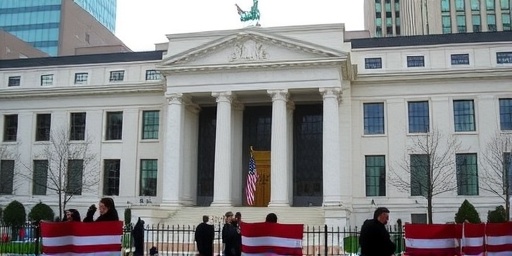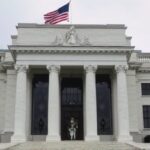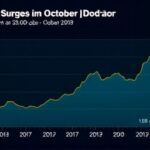U.S. stock futures plunged in pre-market trading on Wednesday, signaling a rocky open for Wall Street as Federal Reserve officials aired sharply contrasting views on the timing and scope of potential interest rate cuts. The discord among policymakers has amplified market volatility, with investors grappling to interpret the mixed signals from the central bank’s latest commentary.
The Dow Jones Industrial Average futures dropped 0.8%, while S&P 500 futures shed 1.1% and Nasdaq futures tumbled 1.4%. This sell-off extended to global markets, where Asian indices like Japan’s Nikkei 225 fell 1.2% and Europe’s STOXX 600 index opened down 0.9%, reflecting widespread unease over the trajectory of Fed policy.
Fed Hawks and Doves Clash Over Monetary Policy Tightening
The root of the market turbulence lies in recent speeches from key Federal Reserve figures, who revealed a deepening divide on monetary policy. Fed Chair Jerome Powell, in a speech at the Economic Club of New York earlier this week, emphasized a data-dependent approach, stating, “We will not hesitate to cut rates if inflation continues to moderate, but we must remain vigilant against upside risks.” This measured tone contrasted sharply with hawkish remarks from St. Louis Fed President James Bullard, who warned that premature rate cuts could reignite inflationary pressures, saying, “The economy is resilient; easing too soon might undo our progress.”
On the dovish side, Chicago Fed President Austan Goolsbee advocated for more aggressive action, noting in an interview with Bloomberg, “With unemployment ticking up to 4.1% and growth slowing, it’s time to pivot toward supporting the labor market through lower interest rates.” These conflicting perspectives highlight the Fed’s internal debates, a staple of its decision-making process but one that has rarely caused such immediate ripples in the stock market.
According to a recent survey by the CME FedWatch Tool, the probability of a 25-basis-point rate cut at the July FOMC meeting has now dipped to 65% from 75% just days ago, underscoring how these diverging views are eroding investor confidence in near-term easing. The current benchmark interest rate stands at 5.25%-5.50%, a level unchanged since July 2023, and the uncertainty surrounding future adjustments is fueling market volatility.
Historical context adds weight to the current drama. During the 2019 Fed pivot, similar policy divergences led to a 10% correction in the S&P 500 over two months. Analysts at Goldman Sachs noted in a client report, “Fed policy miscommunications have historically amplified market swings by 20-30% in volatility indices like the VIX.” Today, the VIX—often called Wall Street’s “fear gauge”—spiked 15% to above 20, its highest level in three months.
Stock Market Sectors Feel the Heat from Rate Uncertainty
The immediate fallout from the Fed’s mixed messages was most pronounced in interest rate-sensitive sectors. Technology stocks, which have driven much of the stock market’s gains this year, bore the brunt of the decline. Shares in the Nasdaq-100, heavily weighted toward Big Tech, saw futures pointing to a 1.5% drop, with semiconductor giant Nvidia falling 2% in after-hours trading amid fears that higher-for-longer rates could crimp growth stocks’ valuations.
Financials also suffered, as banks like JPMorgan Chase and Bank of America dipped in pre-market, down 1.2% and 0.9% respectively. Higher interest rates typically boost bank margins, but the uncertainty over Fed policy is prompting investors to rotate out of the sector in favor of defensive plays like utilities and consumer staples, which bucked the trend with modest gains.
Real estate investment trusts (REITs) and housing-related stocks plummeted, with the Vanguard Real Estate ETF (VNQ) futures indicating a 2.3% decline. Elevated interest rates continue to pressure mortgage affordability, and any delay in rate cuts exacerbates this strain. Data from the National Association of Realtors shows existing home sales at a 28-year low in May, a trend that could worsen if borrowing costs remain sticky.
Broader stock market indices reflected the unease: the S&P 500, which closed at a record high on Tuesday, is now at risk of entering correction territory if the downturn persists. Year-to-date, the index has surged 12%, buoyed by AI hype and expectations of rate relief, but Wednesday’s session could erase a chunk of those gains. Market volatility has surged, with the CBOE Volatility Index (VIX) jumping from 16 to 22 overnight, signaling heightened investor anxiety.
Internationally, the ripple effects were evident. In Europe, Germany’s DAX fell 1.1% as ECB officials echoed U.S. caution on rate paths, while emerging markets like India’s Sensex dropped 0.7%, sensitive to global monetary policy shifts. Currency markets also reacted, with the U.S. dollar strengthening 0.5% against a basket of currencies, pressuring exporters and adding to stock market headwinds.
Economic Data Fuels Debate on Interest Rate Trajectory
Underpinning the Fed officials’ diverging views is a barrage of recent economic indicators that paint a mixed picture. Inflation, as measured by the core PCE index, cooled to 2.6% in May from 2.8% in April, inching closer to the Fed’s 2% target. However, persistent wage growth—up 4.1% year-over-year—and shelter costs remain stubborn, giving hawks ammunition to argue for sustained higher interest rates.
Labor market data tells a dovish story. The June jobs report added 206,000 nonfarm payrolls, below expectations of 240,000, with the unemployment rate holding at 4.1%. This softening has prompted figures like former Fed Governor Lael Brainard to suggest, in a recent op-ed for The Wall Street Journal, “The balance of risks has shifted; monetary policy should follow suit to prevent a harder landing.”
Gross domestic product (GDP) growth for the first quarter was revised downward to 1.3% annualized, signaling a slowdown from the robust 3.4% in Q4 2023. Consumer spending, which accounts for 70% of U.S. economic activity, rose just 0.2% in May, hampered by high interest rates on credit cards and auto loans averaging 20% and 7.5%, respectively.
Fed policy watchers point to these metrics as the crux of the debate. A report from Morningstar estimates that if rates stay elevated through year-end, GDP growth could slip to 1.5%, risking a mild recession. Conversely, aggressive cuts could spur a rebound but at the cost of reaccelerating inflation. “The Fed is walking a tightrope,” said economist Mark Zandi of Moody’s Analytics. “Diverging views reflect genuine uncertainty in the data.”
Global factors are compounding the complexity. Geopolitical tensions in the Middle East have pushed oil prices above $80 per barrel, adding inflationary pressure, while China’s economic slowdown— with GDP growth at 4.7% in Q2—dampens demand for U.S. exports, indirectly supporting calls for looser monetary policy.
Investor Strategies Shift Amid Surging Market Volatility
As market volatility intensifies, investors are recalibrating portfolios to navigate the Fed-induced turbulence. Hedge funds and institutional players are increasing allocations to safe-haven assets: U.S. Treasury yields rose, with the 10-year note climbing to 4.35%, while gold prices hit a fresh record above $2,400 per ounce.
Equity traders are favoring value stocks over growth, with sectors like energy and healthcare outperforming. BlackRock’s iShares Edge MSCI USA Value Factor ETF saw inflows of $500 million in the past week, per EPFR data, as investors seek refuge from interest rate sensitivity.
Options trading volume exploded, with put-to-call ratios reaching 1.2, indicating bearish bets. Retail investors, via platforms like Robinhood, are piling into volatility products; the ProShares VIX Short-Term Futures ETF jumped 10% in early trading.
Analysts recommend diversification. “In times of monetary policy flux, bonds and cash equivalents offer ballast,” advises Fidelity’s Jurrien Timmer. Corporate earnings season, kicking off with JPMorgan’s report this week, could provide clarity, but high interest rates are squeezing profit margins—S&P 500 companies’ net interest expenses rose 25% year-over-year in Q1.
Looking ahead, the next FOMC meeting in late July looms large. Markets are pricing in a 50% chance of no change, up from 30% a week ago. If Powell’s testimony to Congress next week strikes a more dovish note, it could stem the stock market bleed; otherwise, prolonged uncertainty may deepen the downturn.
The interplay of Fed policy and economic data will dictate the path forward. Investors should monitor upcoming releases like the June CPI report, due July 11, which could tip the scales in the rate cut debate. As global markets remain interlinked, any resolution—or lack thereof—in U.S. monetary policy will reverberate worldwide, potentially setting the tone for the second half of 2024.









